What's best value for £1,000 / $1,500 - a road bike, a gravel bike or a hybrid?
We take you through the tech you can expect and the riding their best for
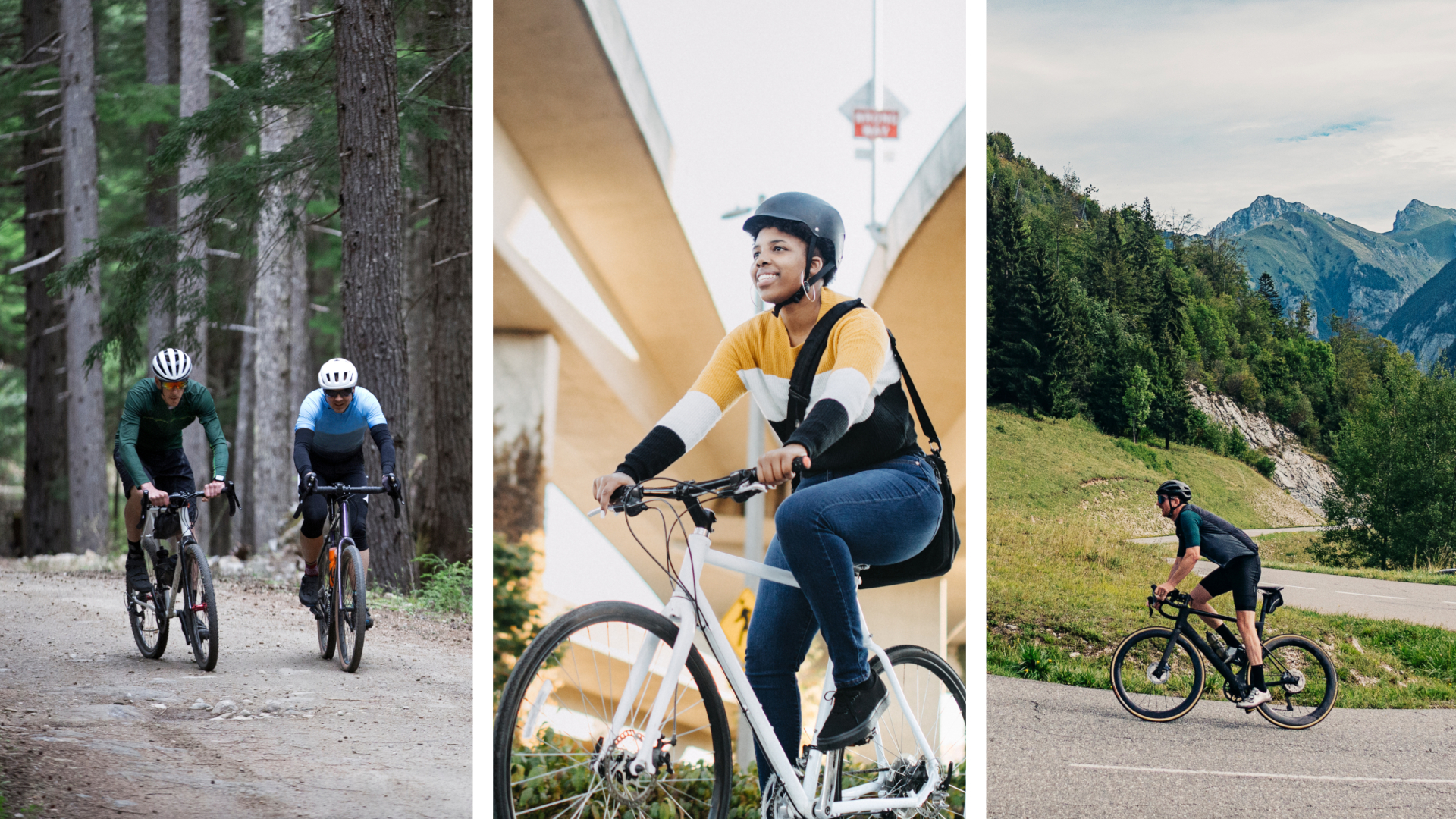
A thousand pounds, or $1,500, is not an insignificant amount to spend on a bicycle. It shows you’re serious about your cycling, whether you’re putting in more hours on the road, spending weekends exploring gravel routes or commuting to work regularly regardless of the season.
Buying a bike with a four digit (or high three-digit) price tag is another step on your cycling journey. It could be that you’re already well invested in road or gravel cycling and are looking for a new bike for a new discipline. You might be an ardent commuter wanting something for the weekend. However, it’s probably likely that this is an upgrade from your existing bike, a reflection of your deepening commitment to a life on two-wheels.
So what represents value at this competitive price point, and which of the three bikes - road, gravel or commuter - is likely to offer you the best deal?
The first question is the same whether you’re spending £500 or £10,000. What do I want the bike for?
Perhaps you’ve recently joined a cycling club and are on the hunt for an upgrade to your road bike that will help you out on the high-paced group rides as well as allowing you to dip your toes into racing. Maybe you’ve been increasing your miles on the road as you build up to your first 100-mile ride and want a bike better suited to long days in the saddle? Either way you’ll be after a ‘traditional’ road bike.
Likewise, if you’re expressly looking for something for bikepacking trips and gravel events, such as Grinduro or Gritfest, or a dedicated vehicle for your weekly commute, then the choice, at least in terms of the type of bicycle, will be pretty clear.
But as we’ve alluded to, if you’re about to shell out £1000 on a new bike it's a safe bet that cycling is now playing a more significant role in your life. The result of this can be a sharpened focus on one discipline alone. But often the more you cycle, the less one-dimensional it becomes.
Get The Leadout Newsletter
The latest race content, interviews, features, reviews and expert buying guides, direct to your inbox!
Weekend rides lead to commuting a couple of times a week, or vice versa. The lure of tranquility, or at least less traffic, is a common starting point for many roadies foray into gravel. Regardless of the specifics, a bike that can serve two, or even three, purposes makes sense. It’s likely to offer better value too.
With all this mind, we’ll explore what you should expect for a road bike, a gravel bike and a commuter at the £1,000 price point. We’ll look at where you can find value, sacrifices that are worth making to save a few pounds (and those that aren’t) as well as how you can make all three options perform double duty, thus helping you get the most for your money.
Road bike

The truth is it’s becoming increasingly hard to find an ‘out-and-out’ road bike for under £1000. While they can still be found, the pool is shrinking. Road bikes have always had the potential to be expensive in comparison to other bicycles. A focus on lightweight materials and cutting edge technology rarely comes cheap. The result is that today a dedicated road machine isn’t the easiest place to find value for money. But it does exist.
Frame
At this price, you’ll be looking at aluminium frames, albeit with a carbon fork. If you find a new carbon bike for £1,000 it’s wise to steer clear. At this price, an alumimum frame from a reputable brand will be better quality and will still be plenty stiff and light.
Road bikes in the price bracket are likely to have endurance geometry. This means a frame that’s designed for comfort and stability over speed and lightning-fast handling. If it’s your first road bike, these are good things. They’re also desirable attributes if you’re looking for a road bike that can also put in a few shifts as a gravel bike or commuter.
How so? Endurance bikes will generally have a road bike geometry that promotes a slightly more upright riding position. They’ll also have longer chainstays and wheelbase and a slacker headtube angle. This promotes the comfort and the stability previously mentioned, both ideal for building your endurance on long rides at a slower pace.
But if you’re also wanting to commute on your new road bike, then a riding position that allows you to keep your eyes on the road is imminently sensible. As is a bike with stable handling, given that you’re likely to be using a rear rack (if the frame accommodates) or carrying a rucksack. Equally, endurance geometry is well-suited to gravel or ‘all-road’ riding, promoting assured handling over rougher terrain.
Other specifications to look for should you want to commute on your road bike include rear rack and mudguard bosses. You may also want to opt for disc brakes over rim brakes, as they should provide more consistent braking across all riding conditions. The extra tyre clearance offered by a disc brake road bike also makes it better suited to a spot of gravel riding too. Conceivably you could switch between 25mm slicks and 32mm tyres with a little tread, creating a road bike that can adequately straddle two worlds.
That said, if you’re going to be spending most of the time on the road a rim brake road bike is likely to be cheaper and lighter, the latter being a seductive attribute if you’re planning on racing or entering a hilly sportive. You can always buy some clip-on mudguards to make it more commuter-friendly. You may find some brands offer the same road model, such as the Trek Domane AL 2 or the Vitus Razor, with both rim and disc options.
Groupset and components
At this price point, you’ll be looking at 8 and 9-speed groupsets. There are a few exceptions, such as the Boardman SLR 8.8 Disc, which manages to serve up a 10-speed Shimano Tiagra gruppo and still be £150 under the £1,000 mark. They’re also likely to be a mix of components rather than a complete groupset; it’s a way for brands to save money.
If you opt for disc brakes, they’ll generally be cable-operated. If this is an issue it’s advisable to look for a frameset that uses the ‘flat mount’ standard, making it easier to upgrade to a set of hydraulic disc brakes down the line.
As for the gearing, expect compact chainsets, so a 50/34t, paired with a cassette that delivers a low-gear for climbing, such as an 11-32t. Like endurance geometry, this can translate to better value in that it increases the bike’s versatility; wide gearing, with a 1:1 or better ‘climbing’ ratio isn’t just good for lumpy road rides or cycling breaks in the Alps, it also lend itself to riding with heavy loads, such as panniers on a commute or framebags on a bikepacking trip, although it won’t be as forgiving as sub-compact set-up that you’ll find on a dedicated gravel bike.
Gravel bike
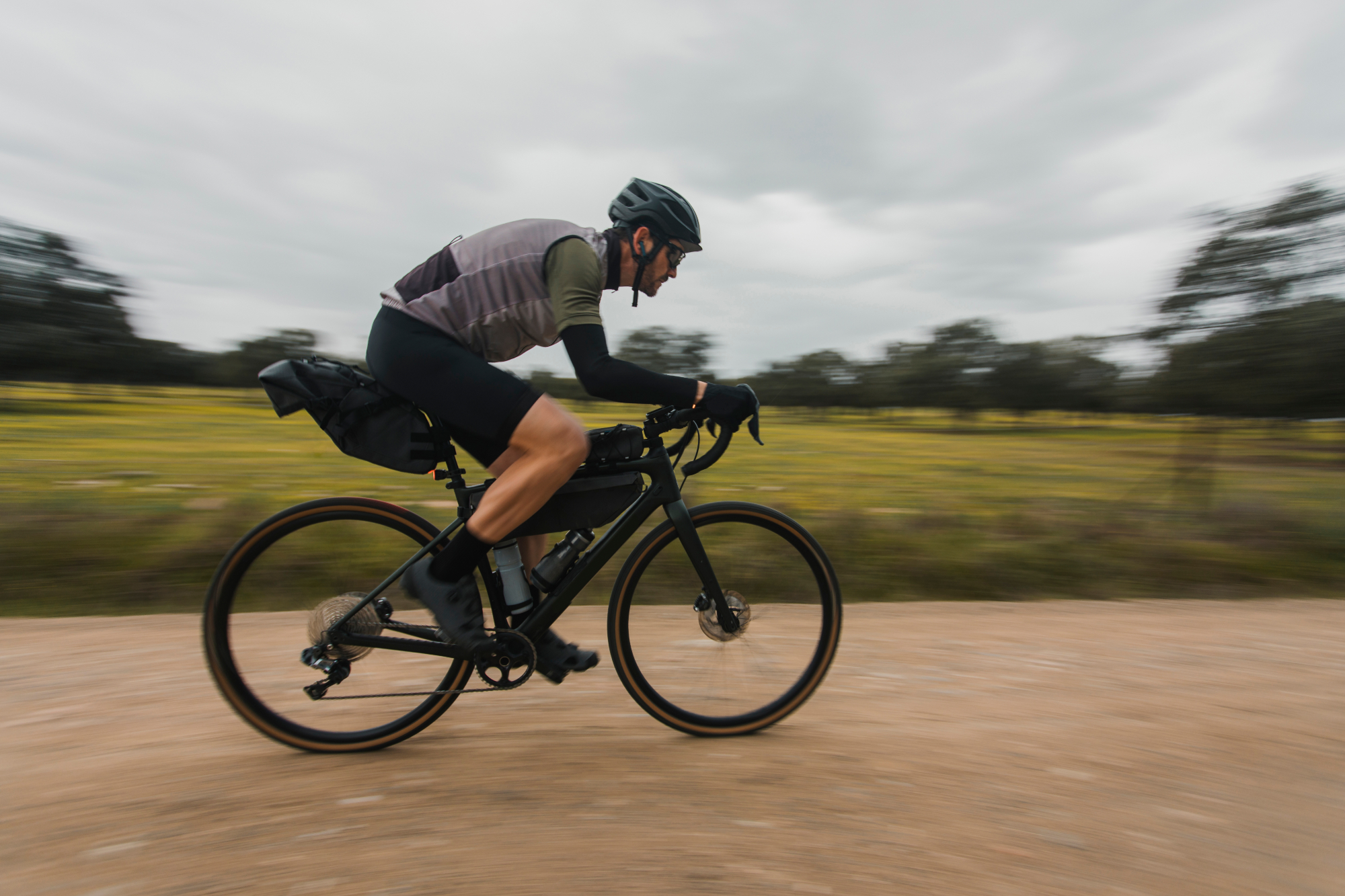
Like their drop-bar brethren, gravel bikes, by and large, don’t come cheap. Given their relatively new status, they have a tendency to feature advanced technology, and in some cases, lots of it. It makes it tougher to find a dedicated gravel bike for under the £1000 /$1500 mark. In fact when buying your first gravel bike, it’s likely that you may need to expand your budget by £150-300/$200-400 or make a compromise or two.
But if you do spend a little more, the best budget gravel bikes are very versatile machines indeed. A gravel bike can handle a bikepacking adventure, a Sunday club ride and a journey to the office and back, all with little compromise. A more expensive bike then, but arguably, given its broad usage, one that delivers greater value.
Frame
Gravel bikes have become more nuanced, reflecting the diverse nature of the discipline. At one end of the spectrum they resemble a beefed up version of the best endurance road bikes, the other they’re akin to a drop-bar mountain bike. This has relevance not only when you’re considering its primary use but also when you’re looking for value by using the bike for a secondary purpose.
Gravel bikes around the £1000 tend to sit more at the road bike end of the spectrum. Like the Giant Revolt 2, Vitus Substance V-2 or the Boardman ADV 8.6. They share many of the attributes of a endurance disc-brake bike, with a relaxed geometry for a stable ride, consistent stopping power and wider tyres for comfort.
The difference in the frames is a bigger serving of comfort, both in the frame geometry and the tyre clearance. The Boardman comes with 38mm Schwalbe G-One all-round tyres, for example. The Vitus wider still. If you’re looking for a gravel bike that can also handle slower-paced road rides, these are examples that could meet your requirements with aplomb.
There’s a good chance that a gravel bike in this price bracket will also come with bosses for racks and guards as well as a third bottle or top-tube ‘bento box’. In the gravel realm, stripped back frames are designed for racing and largely come at the expensive end of the spectrum, such as the Specialized Crux. With options to run a rear rack and mudguards a gravel bike can make a wonderful commuter or winter road bike, especially when paired with wider gravel tyres and disc brakes that excel at dealing with wet and wild weather conditions when cycling in the rain.
Groupset and components
Many gravel bikes at the cheaper end of the spectrum feature double chainsets (often from road groupsets), rather than a 1x found on many gravel bikes designed for a strictly off-road existence. This makes them well-suited for road riding too; in fact the sub-compact set-up, which matches a 48/32t or 46/30t chainset with an 11-34t cassette might better suit cyclists new to the road. Equally, it’s gearing that will work well on a daily commute too, with the low ratios helping out when you’re wearing a cycling backpack, weighed down with paperwork, a laptop and a change of clothing.
If you’re after a gravel bike with a dedicated gravel groupset, such as Shimano’s GRX, then you’re again likely to have to reach a bit deeper into your pocket. Perhaps the best value here is the Boardman ADV 8.9, which delivers a 10-speed set-up that features a GRX rear mech and GRX hydraulic shifters/disc brakes. The latter is a real bonus as it’s far more common for disc brakes to be cable operated on gravel bikes in this price range.
Hybrid bike

If you want a hybrid solely for commuting duties you’re likely to find plenty of value. Hybrids, as general rule, deliver a higher specification for the same money as their road or gravel equivalents. Take the Specialized Sirrus 2.0 EQ. It retails for under £1000 but comes fitted with mudguards, a rear rack and front and rear lights powered by a Shimano dynamo hub as well as having hydraulic disc brakes.
Frame and components
While it’s easy to see how a road bike and gravel bike can be interchangeable, and thus offer good value for money as a ‘two-in-one’ steed, it’s perhaps more of a stretch to imagine how a flat-bar hybrid primarily used for commuting could double-up as a road or gravel bike.
Much of this rests on those bars. Aesthetically, if you’re after a road bike, flat bars might just not cut it. Equally, from a performance point of view they offer a different set of attributes. Promoting an upright riding position, it’s fine for leisurely road ride, or a long-distance tour perhaps, but on a faster ride you may find yourself wishing you could get ‘lower and longer’ in the pursuit of better aerodynamics.
That said, hybrids' continued relevance owes much to their adaptability. I’ve been attending the Tour de France for twenty years and I’m no longer surprised by the sheer number of spectators on hybrids making the pilgrimage to the top of the famous Alpine cols alongside the masses doing the same on fancy road bikes.
I’ve recently ridden the Boardman HYB 8.6, which shares many of the attributes of the brand’s road bikes, including tube shapes and dropped stays. The geometry is a little more relaxed but it accelerated quickly and held its speed well; an example of a fast commuter that could easily be adapted to handle some longer road rides should you wish.
In the same vein, Tom Ritchey, who knows a thing or two about making bikes to cover multiple bases, once said that “all bikes are gravel bikes”. And he’s right. The best modern hybrid bikes that get you to and from work during the week are likely to offer plenty of tyre clearance and have gravel-friendly gear ratios to allow you to use the bike for fun, too. The flat bars might even be a bonus if your off-road riding plans lean more towards bikepacking adventures than fast rides or races.
Conclusion
If your riding is varied then a £1000 bike that can serve a couple of purposes is unquestionably good value. A modern road bike, with disc brakes and room for wider tyres, is well-equipped to handle a few gravel duties. Likewise, a gravel bike with a change of tyres can perform admirably on the road. In fact the continued blurring between drop bar bikes labeled ‘road’, ‘all-road’ and ‘gravel’ means that many of today’s models are designed with dual use in mind.
A hybrid too can offer plenty of value, especially if you’re essentially after a commuter that can be used at weekends for the odd road ride or camping trip. In this price bracket you’ll get hydraulic disc brakes, wide gear ratios and even additional extras such as bike mudguards for autumn and winter riding or a rear pannier rack.
If this sounds like a hung jury, it’s because it is. A roadie who wants to go fast on something that resembles a Tour de France machine will find their value in a £1000 road bike. They don’t require it to perform extra-curricular activities so don’t need to seek a compromise. This will ring true for dedicated commuters and gravel enthusiasts too; value comes from getting the most spec you can for your money, with no concern on how the bike may perform elsewhere.
So instead we’ve chosen to pick three ‘winners’, one road, one gravel and one commuter, that offer great value because they’re adept at performing not only across their preferred terrain but also on a less familiar path too.
Our picks...
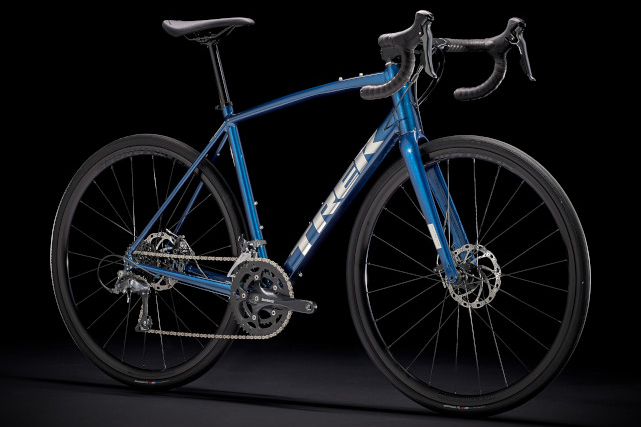
Trek Domane AL 2 Disc
Specifications
Reasons to buy
Reasons to avoid
We chose Trek's Domane AL 2 Disc as our best value road bike because it exemplifies the versatility discussed above. As a road bike it's comfortable and forgiving but not at all dull - it eats up the miles making it ideal for long rides and hilly sportives. Because of its generous tyre clearance and endurance geometry it's well-suited to a spot for gravel riding too. And finally it comes with bosses for mudguards (fenders) and a rear rack meaning it will handle the commute to work without compliant. Three bike in one sounds like pretty value in our book.
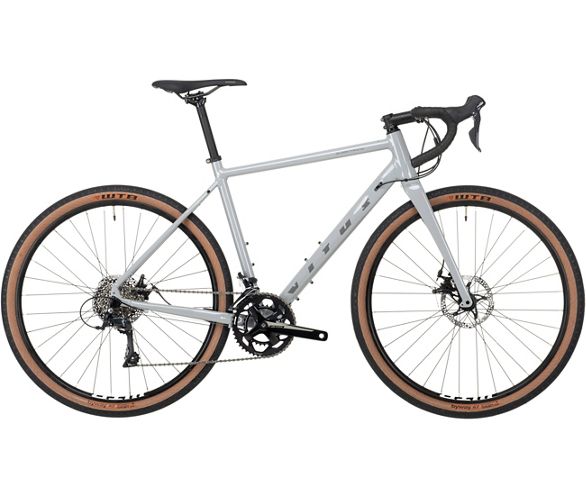
Vitus Substance V2
Specifications
Reasons to buy
Reasons to avoid
The Vitus Substance V2, like the Trek Domane, is a do-it-all machine. As a gravel bike alone it offers plenty of flexibility; it's compatible with 1x and 2x drivechains and both 700c and 650b wheel sizes. But it also comes with bosses for a rear rack and mudguards (fenders), which elevate its commuter credentials too. Stripped back it also works as a reliable and comfortable road bike, it's relaxed geometry and wide gear range well-suited to long, hilly days on less-than-perfect road surfaces.
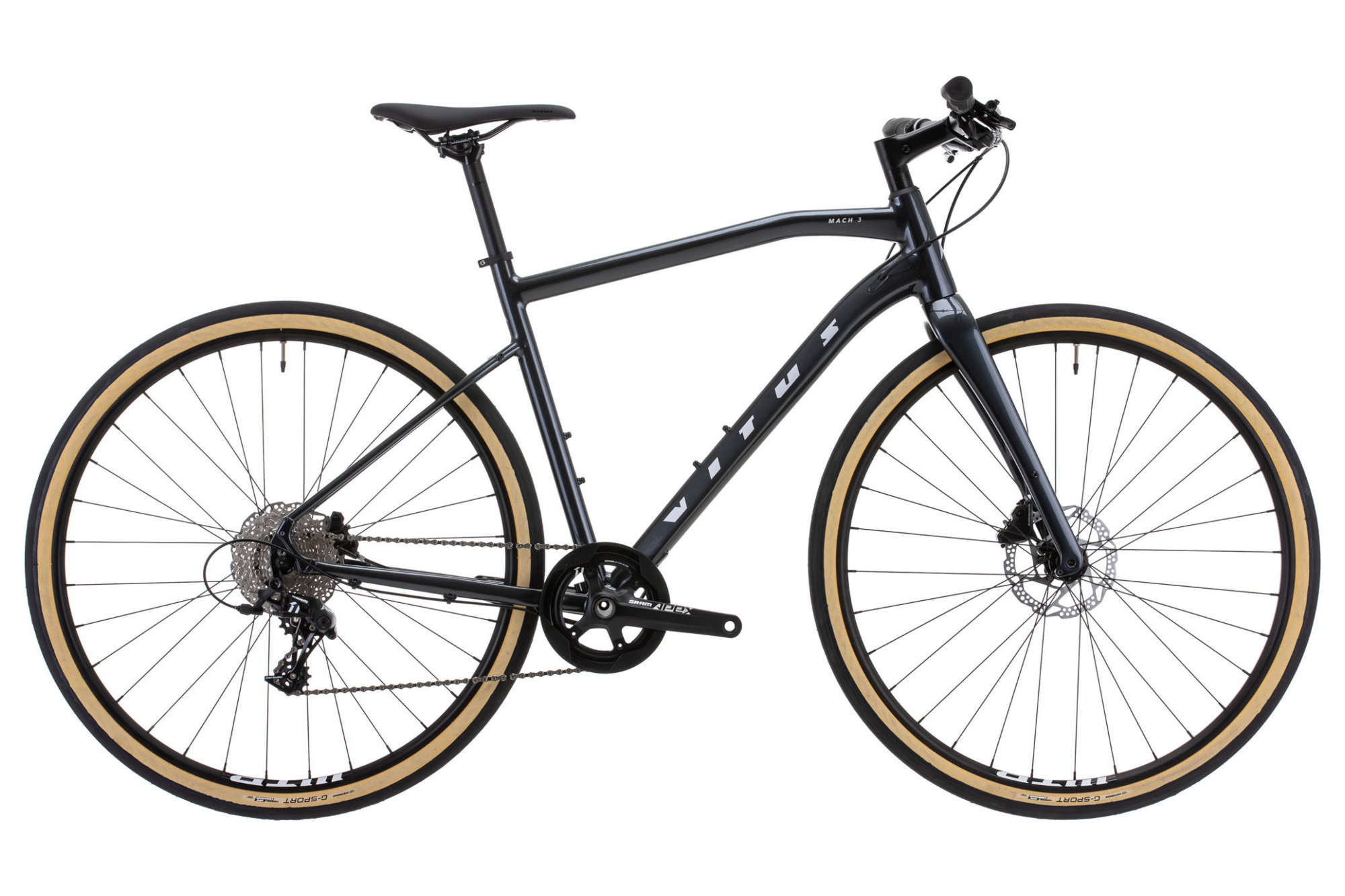
Vitus Mach 3 VRX Urban Bike
Specifications
Reasons to buy
Reasons to avoid
The Vitus Mach 3 VRX is ideally equipped to meet the demands of the daily commute Its SRAM Apex 1x11 drivechain is simple to use and care for, while offering plenty of range to deal with steep hills and rolling terrain alike. The hydraulic brakes are a bonus at this price point and offer superior braking across a range of weather conditions, while the 38mm tyres should help to absorb the lumps and the bumps There's mounts for mudguards and a rear rack too.
These attributes also make the Mach VRX well-suited to 'fitness' rides, both on-road and off, from country lanes to tow-paths to fire roads. Stripped back, it's capable of rolling along at a decent clip, but thanks to the rack and guards it's more than ready for longer weekend adventures too.

Thank you for reading 20 articles this month* Join now for unlimited access
Enjoy your first month for just £1 / $1 / €1
*Read 5 free articles per month without a subscription

Join now for unlimited access
Try first month for just £1 / $1 / €1
Luke Friend has worked as a writer, editor and copywriter for twenty five years. Across books, magazines and websites, he's covered a broad range of topics for a range of clients including Major League Baseball, the National Trust and the NHS. He has an MA in Professional Writing from Falmouth University and is a qualified bicycle mechanic. He has been a cycling enthusiast from an early age, partly due to watching the Tour de France on TV. He's a keen follower of bike racing to this day as well as a regular road and gravel rider.
-
 'This is the marriage venue, no?': how one rider ran the whole gamut of hallucinations in a single race
'This is the marriage venue, no?': how one rider ran the whole gamut of hallucinations in a single raceKabir Rachure's first RAAM was a crazy experience in more ways than one, he tells Cycling Weekly's Going Long podcast
By James Shrubsall
-
 Full Tour of Britain Women route announced, taking place from North Yorkshire to Glasgow
Full Tour of Britain Women route announced, taking place from North Yorkshire to GlasgowBritish Cycling's Women's WorldTour four-stage race will take place in northern England and Scotland
By Tom Thewlis
-
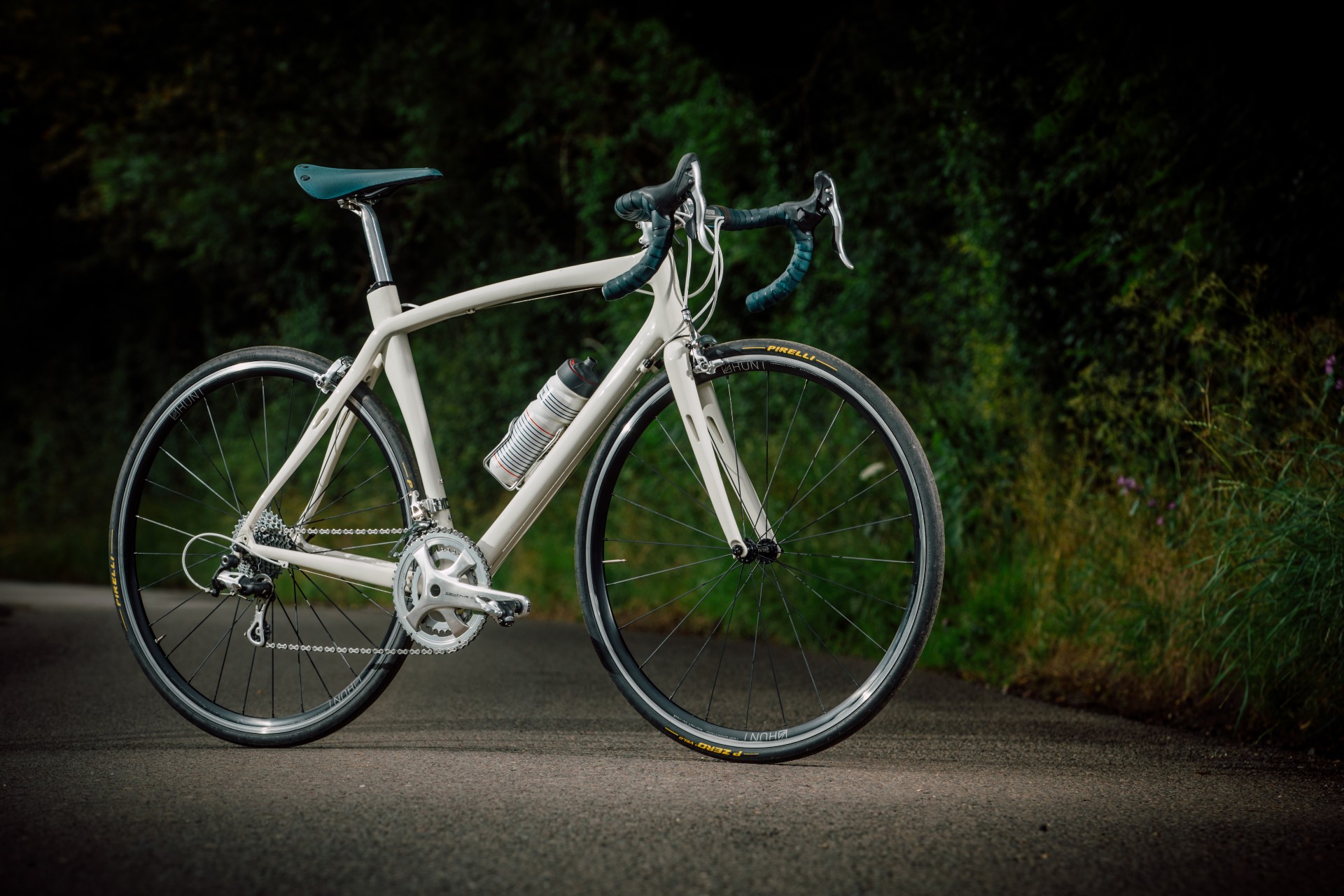 Five cost-effective upgrades to make a second-hand bike feel like new again
Five cost-effective upgrades to make a second-hand bike feel like new againWe run you through the most cost-effective ways to get a 'brand new' feeling from a second hand bike
By Stefan Abram
-
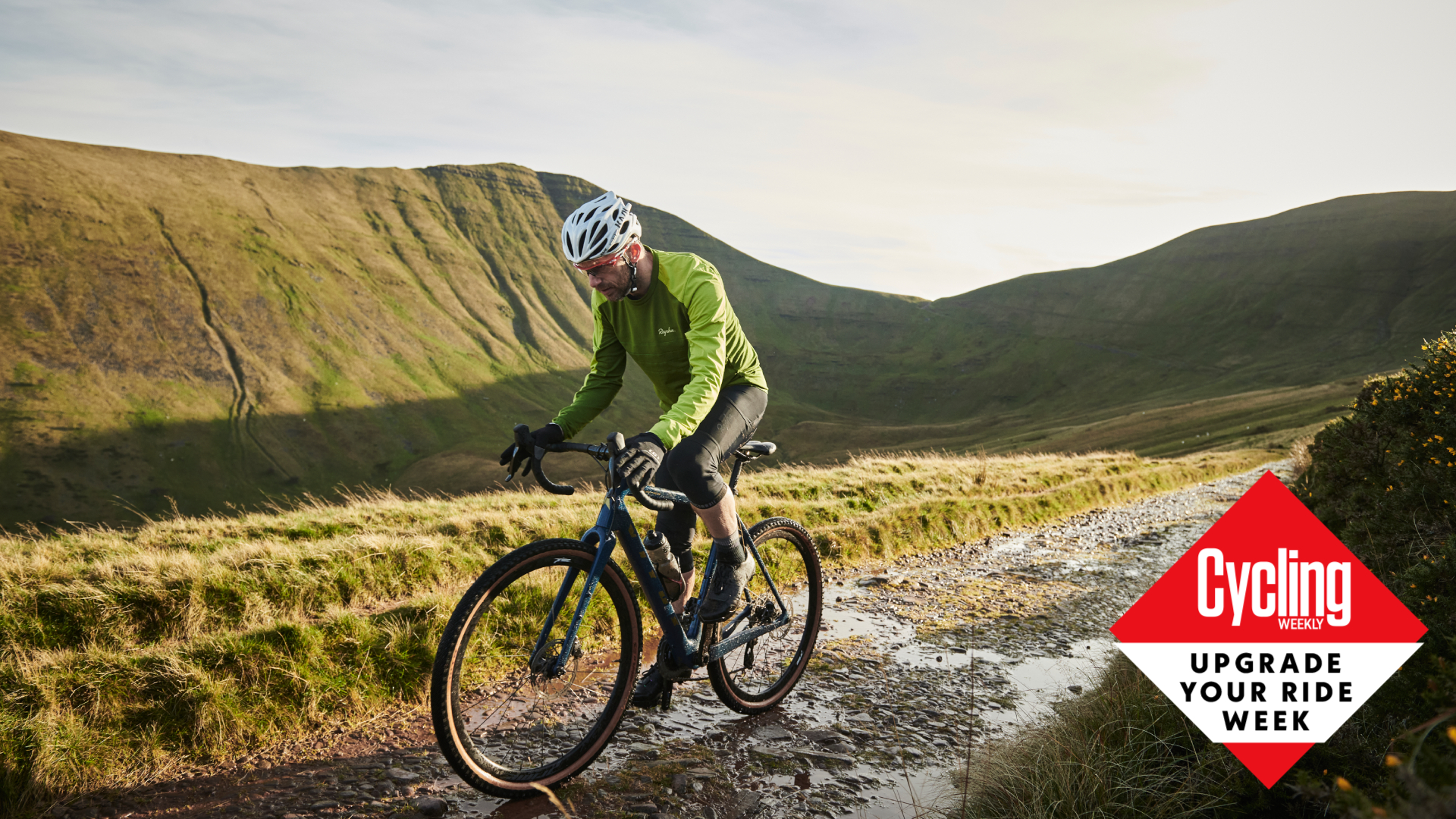 Five simple upgrades to get the best out of your gravel bike
Five simple upgrades to get the best out of your gravel bikeHere's how to to push your bike further – and go faster off-road
By Stefan Abram
-
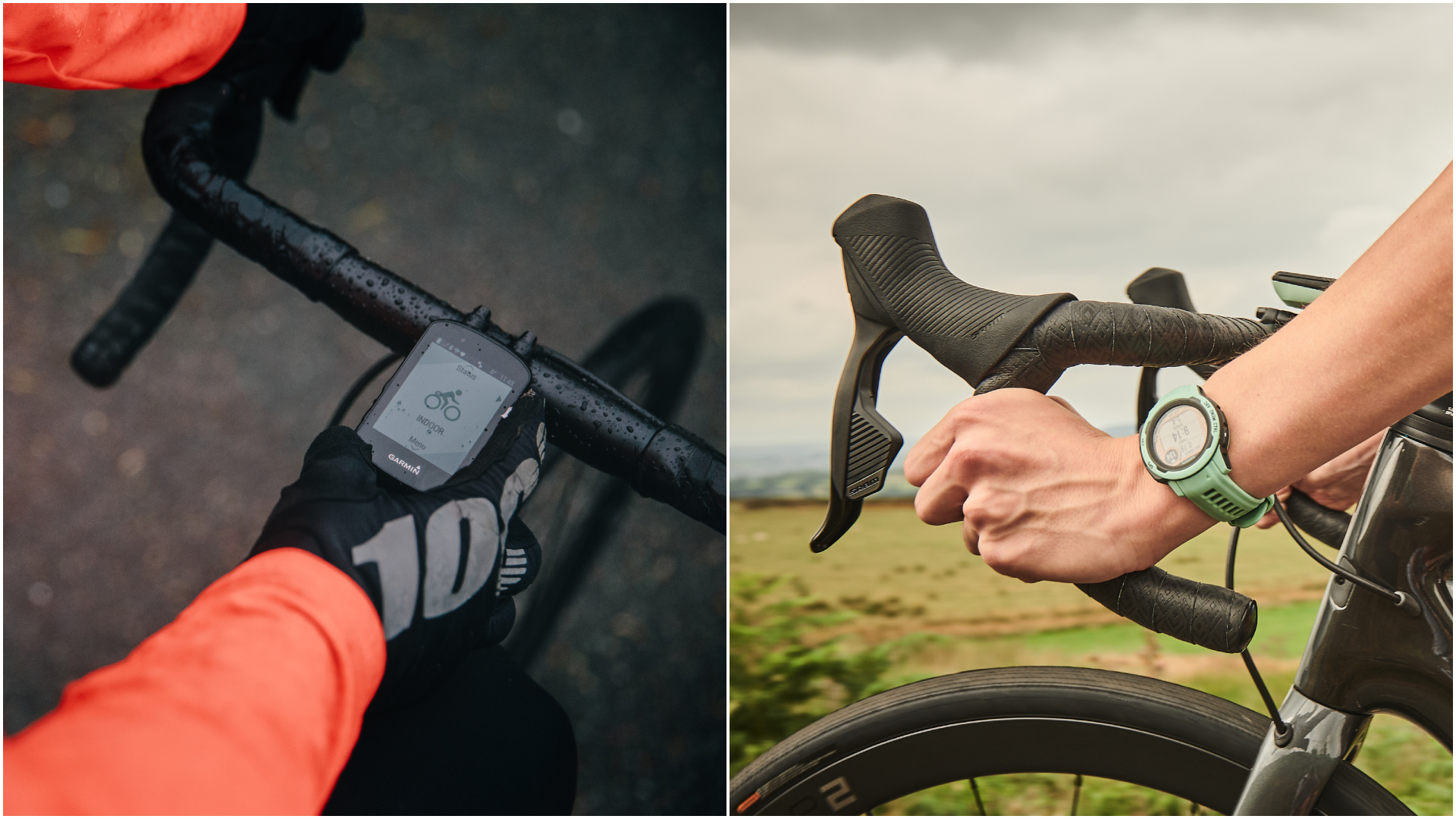 Smartwatch versus cycling computer: which is best for cyclists?
Smartwatch versus cycling computer: which is best for cyclists?Is mapping most important to you? Or would you get more out of 24/7 health monitoring? - we take you through all the pros and cons of wearables versus bike-mounted devices
By Luke Friend
-
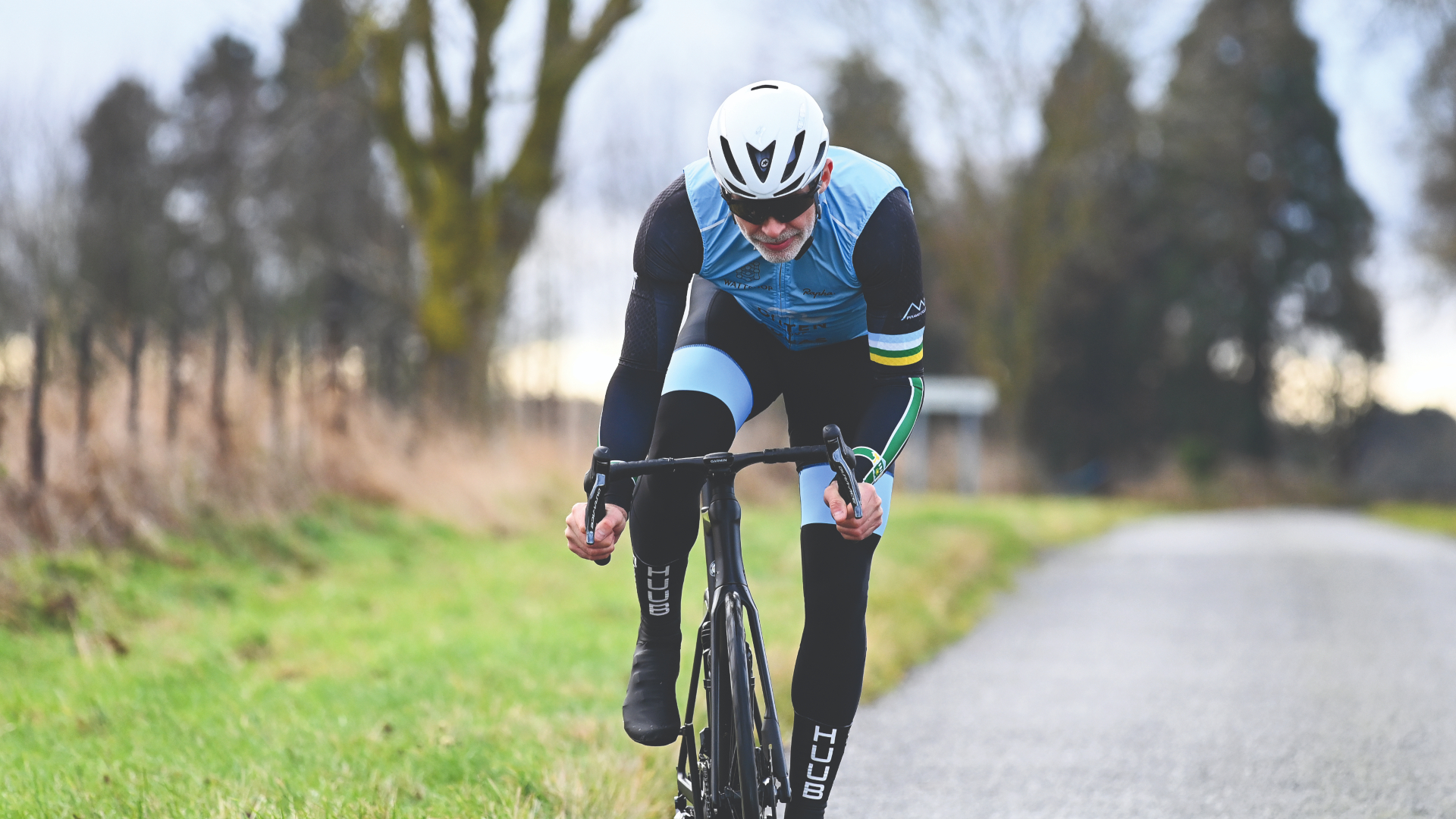 Help the environment; save some money – here's how to make your cycling kit last longer
Help the environment; save some money – here's how to make your cycling kit last longerSurprisingly easy ways to keep your bike gear going and going
By Hannah Bussey
-
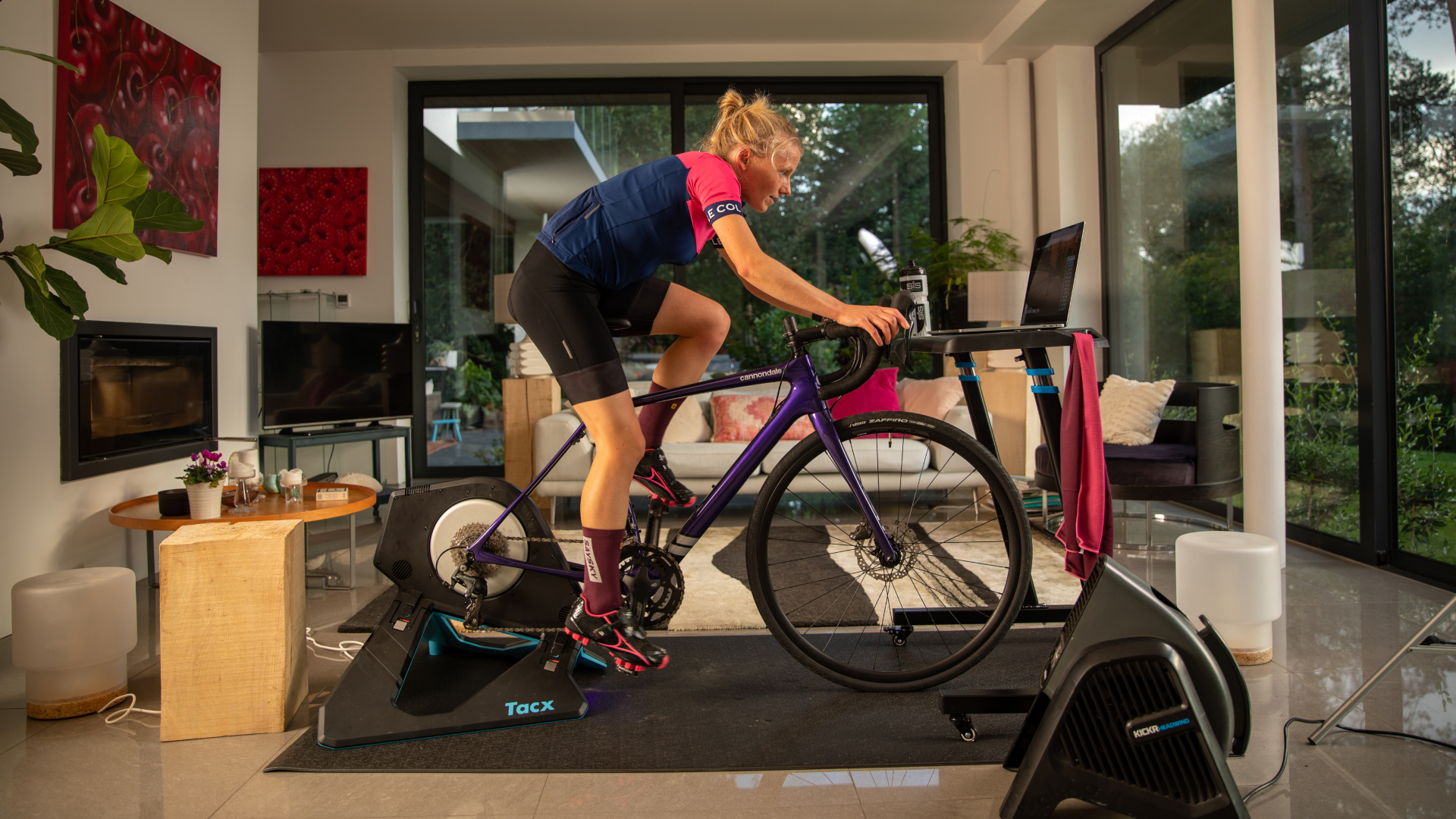 Cheap versus expensive turbos trainers: are you paying four figures for features you don’t need?
Cheap versus expensive turbos trainers: are you paying four figures for features you don’t need?Today's turbo trainers are available at a myriad of price points but what are the differences between entry level and top-tier units? We take a look at the details and their impact on the experience of riding indoors
By Luke Friend
-
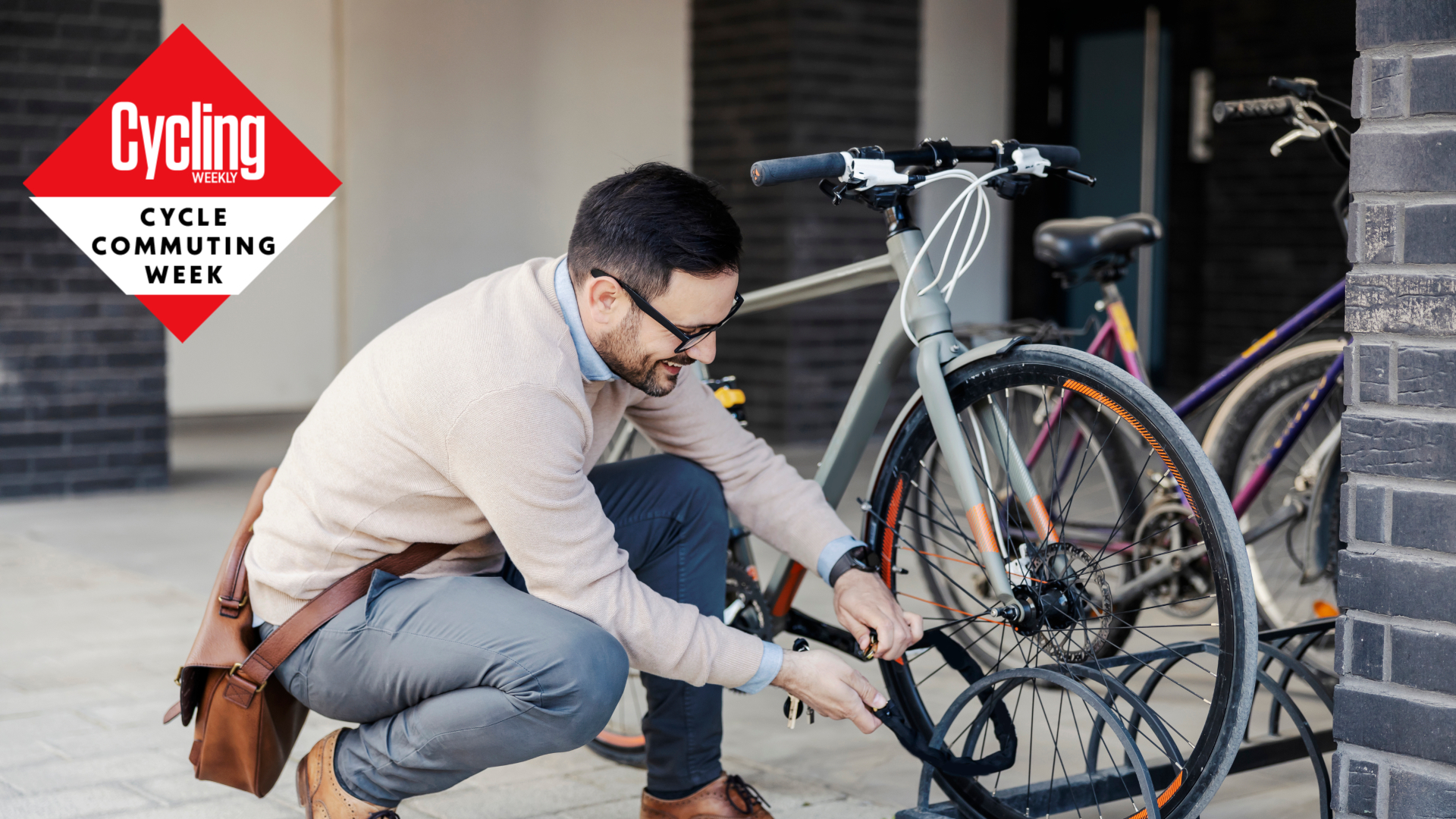 Not all bike locks are created equal, so just how much do you need to spend to protect your bike?
Not all bike locks are created equal, so just how much do you need to spend to protect your bike?Commuting to work requires a bike lock to keep your steed safe, but what are the differences between 'cheap' and 'expensive' locks?
By Luke Friend
-
 Can cheap road helmets match up to more expensive lids? We look at the key differences
Can cheap road helmets match up to more expensive lids? We look at the key differencesA helmet is a vital piece of cycling kit, providing crucial protection for your head - but how do budget and premium models compare?
By Luke Friend
-
 How do cheap sunglasses stack up against those rocking three-figure price tags? We explain the key differences
How do cheap sunglasses stack up against those rocking three-figure price tags? We explain the key differencesNot only does a set of cycling sunglasses shade your eyes, they provide a mini shield against bugs and debris. Many cyclists won't go out without them – but are expensive models really any better?
By Luke Friend